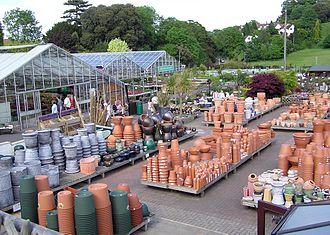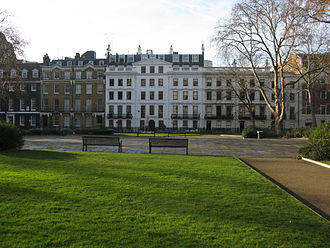Discover Your Roots
SIGN UPDiscover Your Roots
SIGN UPThe name Garden is of Basque origin and is primarily used for females. It means "Cultivated Land of Flowers or Plants." A garden is a planned outdoor space for the cultivation and enjoyment of plants and nature. It can include natural and artificial elements, such as statuary, water features, and various plant types. Gardens have aesthetic, functional, and recreational uses, including relaxation, bird-watching, and growing produce. The history of gardens dates back to ancient civilizations, with notable examples in China, India, Japan, and Europe. Garden design involves the layout of hard and soft elements, considering horticultural requirements and seasonal appearances. Gardeners play a role in environmental impact and climate change, with methods to prevent harm and contribute positively to the environment. Overall, the name Garden is associated with natural beauty, cultivation, and harmony with nature.

Garden design is the art of creating plans for the layout and planting of gardens and landscapes. It can be done by the garden owner or by professionals with varying levels of expertise. Professional garden designers usually have training in horticulture and design principles, and some may also be landscape architects with advanced degrees and state licenses. Amateur gardeners can also gain experience through study or by joining gardening clubs. Effective garden design is based on principles that cater to the needs, goals, and desires of the users or owners of the gardens. It includes the layout of hardscape such as paths, walls, water features, and the softscape, which comprises the plants themselves. The location of a garden, its soil quality, and boundaries all influence its design. The topographical landscape features, soil quality, and boundaries can significantly influence the design of a garden. Consideration is given to the maintenance needs of the garden and the budget available for regular maintenance. All these factors contribute to creating a well-designed and functional garden that meets the desired stylistic genre and connects to the surrounding areas.

Garden centers, also known as nurseries or garden centers in the United States, are retail establishments specializing in the sale of plants and related products for domestic gardening. Originating from the concept of retail plant nurseries, garden centers have evolved to offer a wider range of outdoor products and on-site facilities. In the United Kingdom, the industry is diverse, with over 1,500 garden centers ranging from small independent businesses to large national chains, generating an estimated £4.6 billion annually. These centers offer a variety of products including plants, compost, fertilizers, tools, landscaping materials, pet-related products, home and interior products, and food and drink. The sector plays a crucial role in the UK economy, providing employment for over 100,000 people and fostering the promotion of gardening and outdoor living. The first garden center in the UK, the Royal Horticultural Society's Garden Shop, opened in 1860, marking the beginning of a popular trend. The evolution of garden centers has been driven by factors such as the increasing popularity of gardening, the rise of national chains, and the development of new shopping centers. In the United States, the retail garden-center market consisted of roughly 16,000 independently operated companies in 2010.

A garden square is a type of communal garden enclosed by buildings, often accessible to the public. These squares were originally private communal amenities for residents and have a long history dating back to ancient civilizations. In the 20th century, many private garden squares became accessible to the public, while others remain closed to the public despite their central urban locations.In Europe, particularly in the United Kingdom and France, garden squares are prominent features of urban landscapes. London is famous for its garden squares, with many built during the Georgian era. The UK Parliament passed the 1913 London Squares Preservation Act to protect these spaces from inappropriate development. Similarly, Paris boasts several historic garden squares, such as the Place des Vosges, which was a fashionable and expensive square during the 17th and 18th centuries.Outside of Europe, notable examples of garden squares can be found in the United States, Belgium, and Ireland. Dublin, for instance, has several Georgian examples, including Merrion Square and St Stephens Green.Overall, garden squares are important urban features, blending historical significance with communal and public access, and are valued for their green spaces in densely built urban environments.

A garden room is a secluded and partly enclosed space within a garden, creating a room-like effect, and has been a part of garden design for centuries. It is distinct from terraces and patios, often serving as the most used parts of a garden. Boundaries of a garden room may be formed by walls, hedges, or plants, and the space should normally be enclosed, except for the entrances. Furniture is not essential, but may include seating. In architecture, the term "garden room" may refer to a sunroom, conservatory, or any room with a good view of a garden. Small single-roomed buildings in a garden are often called summer houses, gazebos, or garden houses. Garden rooms can introduce variety and structure, suitable for seasonal displays and offering necessary shelter to plants in cold or windy areas. While some gardeners dislike the term, others consider it "overused." Throughout history, garden rooms have been described in ancient and medieval writings and were popular in Italian Renaissance and French formal gardens. In the 20th century, garden rooms saw a resurgence in traditional English cottage garden styles after World War I. Famous English gardens that incorporate garden rooms include Sissinghurst Castle Garden, Hidcote, and Tintinhull.

All images displayed on this page are sourced from Wikipedia or Wikimedia Commons.We use these images under their respective Creative Commons or public domain licenses. Wherever applicable, author attributions and license information are provided. If you believe an image is used incorrectly or outside its license terms, please contact us so that we can review and correct the issue.